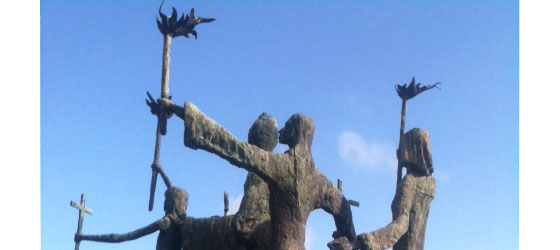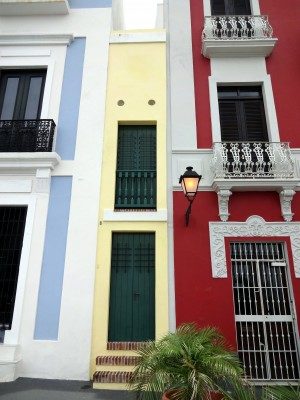La Rogativa is a famous bronze statue located in the Plazuela de la Rogativa on Caleta de las Monjas near La Puerta de San Juan. Rogativa is a Spanish word derived from the verb “rogar” meaning to plea or to supplicate. A Rogativa is a large procession of people making a plea to God for help.
British troups, led by Sir Abercrombie, took control of the city by naval blockade on April 30, 1797. The desperate governor of San Juan ordered a “rogativa.” The women, led by the bishop, marched through the streets that night. They started at the Cathedral. They sang hymns, carried torches and bells, and prayed for their city’s deliverance. The British mistook the sights and sounds as evidence of the arrival of reinforcements. Considering themselves to be outnumbered, Abercrombie’s fleet abandoned the city promptly.
There are four bronze statues commemorating this event in Plazuela de la Rogativa. This group of statues pays tribute to the efforts of the townspeople and their Bishop.
Lindsay Daen of New Zealand completed the statue in 1971. It stands 12-feet high in front of an old sentry box and a beautiful view of San Juan Bay.


- Popular belief is Rogativa marks the birth of “puertorriqueñismo,” or local patriotism because it was the first time local civilian islanders fought for their island.
- The artist apparently buried toys under the statue after his child died at an early age.




